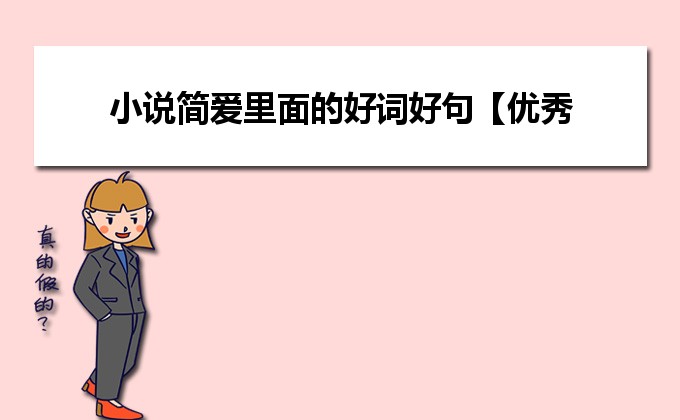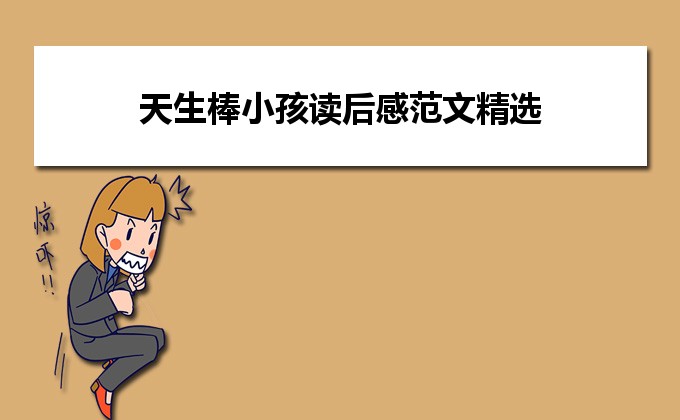《简?爱》是英国女作家夏洛蒂?勃朗特创作的长篇小说,是一部具有自传色彩的作品。小说简爱的英文经典读后感,一起来看看。
小说简爱的英文经典读后感(一)
Let me tell what I feel after reading the great work Jane Erye.I was really move by Jane Erye after closing the book.What a kind and good woman!
Mrs Eyre had a heart of gold.She really loved everyone around her,and gave others help sincerely.She respected herself and did her best to do everything.I really love her.
She are both a great teacher and a good friend of mine.Sometimes when I am confuse,I will think of her.I will imagine what will she do if she is I.Why not read Jane Erye my friends!
小说简爱的英文经典读后感(二)
I first read "Jane Eyre" in eighth grade and have read it every few years since. It is one of my favorite novels, and so much more than a gothic romance to me, although that's how I probably would have defined it at age 13. I have always been struck, haunted in a way, by the characters - Jane and Mr. Rochester. They take on new depth every time I meet them...and their's is a love story for the ages.
Charlotte Bronte's first published novel, and her most noted work, is a semi-autobiographical coming-of-age story. Jane is plain, poor, alone and unprotected, but due to her fierce independence and strong will she grows and is able to defy society's expectations of her. This is definitely feminist literature, published in 1847, way before the beginning of any feminist movement. Perhaps this is one of the reasons why the novel has had such a wide following since it first came on the market. It is also one of the first gothic romances published and defines the genre.
Jane Eyre, who is our narrator, was born into a poor family. Her parents died when she was a small child and the little girl was sent to live with her Uncle and Aunt Reed at Gateshead. Jane's Uncle truly cared for her and showed his affection openly, but Mrs. Reed seemed to hate the orphan, and neglected her while she pampered and spoiled her own children. This unfair treatment emphasized Jane's status as an unwanted outsider. She was often punished harshly. On one occasion her nasty cousin Jack picked a fight with her. Jane tried to defend herself and was locked in the terrifying "Red Room" as a result. Jane's Uncle Reed had died in this room a little while before, and Mrs. Reed knew how frightened she was of the chamber. Since Jane is the narrator, the reader is given a first-hand imPssion of the child's feelings, her heightened emotional state at being imprisoned. Indeed, she seems almost like an hysterical child, filled with terror and rage. She repeatedly calls her condition in life "unjust" and is filled with bitterness. Looking into the mirror Jane sees a distorted image of herself. She views her reflection and sees a "strange little figure," or "tiny phantom." Jane has not learned yet to subordinate her passions to her reason. Her passions still erupt unchecked. Her isolation in the Red Room is a Psentiment of her later isolation from almost every society and community. This powerful, beautifully written scene never fails to move me.
Mrs. Reed decided to send Jane away to the Lowood School, a poor institution run by Mr. Brocklehurst, who believed that suffering made grand people. All the children there were neglected, except to receive harsh punishment when any mistake was made. At Lowood, Jane met Helen Burns, a young woman a little older than Jane, who guided her with vision, light and love for the rest of her life. Jane's need for love was so great. It really becomes obvious in this first friendship. Helen later died from fever, in Jane's arms. Her illness and death could have been avoided if more attention had been paid to the youths. Jane stayed at Lowood for ten years, eight as a student and two as a teacher. Tired and dePssed by her surroundings, Jane applied for the position of governess and found employment at Thornfield. The mansion is owned by a gentleman named Edward Fairfax Rochester. Her job there was to teach his ward, an adorable little French girl, Adele. Over a long period the moody, inscrutable Rochester confides in Jane and she in him. The two form an unlikely friendship and eventually fall in love. Again, Jane's need for love comes to the fore, as does her passionate nature. She blooms. A dark, gothic figure, Rochester also has a heart filled with the hope of true love and future happiness with Jane. Ironically, he has brought all his misery, past and future, on himself.
All is not as it seems at Thornfield. There is a strange, ominous woman servant, Grace Poole, who lives and works in an attic room. She keeps to herself and is rarely seen. From the first, however, Jane has sensed bizarre happenings at night, when everyone is asleep .There are wild cries along with violent attempts on Rochester's life by a seemingly unknown person. Jane wonders why no one investigates Mrs. Poole. Then a strange man visits Thornfield and mysteriously disappears with Mr. Rochester. Late that night Jane is asked to sit with the man while the lord of the house seeks a doctor's help. The man has been seriously wounded and is weak from loss of blood. He leaves by coach, in a sorry state, first thing in the morning. Jane's questions are not answered directly. This visit will have dire consequences on all involved. An explosive secret revealed will destroy all the joyful plans that Jane and Rochester have made. Jane, once more will face poverty and isolation.
Charlotte Bronte's heroine Jane Eyre, may not have been graced with beauty or money, but she had a spirit of fire and was filled with integrity and a sense of independence - character traits that never waned in spite of all the opPssion she encountered in life. Ms. Bronte brings to the fore in "Jane Eyre" such issues as: the relations between men and women in the mid-19 century, women's equality, the treatment of children and of women, religious faith and hypocrisy (and the difference between the two), the realization of selfhood, and the nature of love and passion. This is a powerhouse of a novel filled with romance, mystery and passions. It is at once startlingly fresh and a portrait of the times. Ms. Bronte will make your heart beat faster, your pulse race and your eyes fill with tears.
小说简爱的英文经典读后感(三)
Jane Eyre ? A Beautiful Soul
Jane Eyre, is a poor but aspiring, small in body but huge in soul, obscure but self-respecting girl. After we close the covers of the book, after having a long journey of the spirit, Jane Eyre, a marvelous figure, has left us so much to recall and to think:
We remember her goodness: for someone who lost arms and blinded in eyes, for someone who despised her for her ordinariness, and even for someone who had hurt her deeply in the past.
We remember her pursuit of justice. It’s like a companion with the goodness. But still, a virtuous person should promote the goodneon one side and must check the badneon the other side.
We remember her self-respect and the clear situation on equality. In her opinion, everyone is the same at the God’s feet. Though there are differences in status、in property and also in appearance, but all the human being are equal in personality.
We also remember her striving for life, her toughneand her confidence…
When we think of this girl, what she gave us was not a Ptty face or a transcendent temperament that make us admire deeply, but a huge charm of her personality.
Actually, she wasn’t Ptty, and of course, the ordinary appearance didn’t make others feel good of her, even her own aunt felt disgusted with it. And some others even thought that she was easy to look down on and to tease, so when MiIngram met Jane Eyre, she seemed quite contemptuous, for that she was obviously much more Pttier than ‘the plain and ugly governess’. But as the little governehad said: ‘Do you think, because I am poor, obscure, plain, and little, I am soulleand heartless? You think wrong!’ This is the idea of equality in Jane Eyre’s mind. God hadn’t given her beauty and wealth, but instead, God gave her a kind mind and a thinking brain. Her idea of equality and self-respect imPus so much and let us feel the power inside her body.
In my mind, though a person’s beauty on the face can make others once feel that one is attractive and charming, if his or her mind isn’t the same beautiful as the appearance, such as beauty cannot last for, when others find that the beauty which had charmed them was only a falsity, it’s not true, they will like the person no more. For a long time, only a person’s great virtue, a noble soul, a beautiful heart can be called as AN EVERLASTING BEAUTY, just as Kahill Gibran has said, that ‘Beauty is a heart enflamed and a soul enchanted’. I can feel that how beauty really is, as we are all fleshly men, so we can’t distinguish whether a man is of nobleneor humbleness, but fleshly men, so we can’t distinguish whether a man is of nobleneor humbleness, but as there are great differences in our souls, and from that, we can know that whether a man is noble or ordinary, and even obscure, that is, whether he is beautiful or not.
Her story makes us thinking about life and we learn much from her experience, at least, that is a fresh new recognition of the real beauty.
小说简爱的英文经典读后感(四)
Jane Eyre was published in 1847 under the androgynous pseudonym of "Currer Bell." The publication was followed by widesPad success. Utilizing two literary traditions, the Bildungsroman and the Gothic novel, Jane Eyre is a powerful narrative with profound themes concerning genders, family, passion, and identity. It is unambiguously one of the most celebrated novels in British literature.
Born in 1816, Charlotte Bronte was the third daughter of Patrick Bronte, an ambitious and intelligent clergyman. According to Newsman, all the Bronte children were unusually Pcocious and almost ferociously intelligent, and their informal and unorthodox educations under their father’s tutelage nurtured these traits. Patrick Bronte shared his interests in literature with his children, toward whom he behaved as though they were his intellectual equals. The Bronte children read voraciously. Charlotte’s imagination was especially fired by the poetry of Byron, whose brooding heroes served as the prototypes for characters in the Bronte’s juvenile writings as well as for such figures as Mr. Rochester in Jane Eyre (2)。 Bronte’s formal education was limited and sporadic ? ten months at the age of 8 at Cowan Bridge Clergy Daughters’ School (the model for Lowood Institution in Jane Eyre), eighteen months from the age of 14 at Roe Head School of Miss Margaret Wooler (the model for Ms. Temple) (Nestor 3-4)。 According to Newman, Bronte then worked as a teacher at Roe Head for three years before going to work as a governess. Seeking an alternative way of earning money, Charlotte Bronte went to Brussels in 1842 to study French and German at the Pensionnat Heger, Pparing herself to open a school at the parsonage. She seems to have fallen in love with her charismatic teacher, Constantin Heger. The experience seems on a probable source for a recurrent feature in Bronte’s fiction: “relationships in which the inflammatory spark of intellectual energy ignites an erotic attraction between a woman and a more socially powerful man” (Newman 6)。 The Brontes’ efforts to establish a school at the parsonage never got off the ground. Still seeking ways to make money, Charlotte published, with her sisters, the unsuccessful Poems by Currer, Ellis, and Acton Bell. Her first effort to publish a novel, The Professor, was also unsuccessful. Jane Eyre, published in October 1847, however, was met with great enthusiasm and became one of the best sellers. As “Currer Bell” Bronte completed two more novels, Shirley and Villette. She married Reverend William Bell Nicholls in 1854 and died nine months later, at the age of thirty-nine in 1855 (Nestor 4-5)。
The story of Jane Eyre takes place in northern England in the early to mid-19th Century. (“Jane Eyre” 151) It starts as the ten-year-old Jane, a plain but unyielding child, is excluded by her Aunt Reed from the domestic circle around the hearth and bullied by her handsome but unpleasant cousins. Under the suggestion of Mr. Lloyd, an apothecary that sympathizes Jane, Mrs. Reed sends Jane to Lowood Institution operated by a hypocritical Evangelicalist, Mr. Brocklehurst, who chastises Jane in front of the class and calls her a liar. At Lowood, Jane befriends with Helen Burns, who helps the newly arrived Jane adjust to the austere













